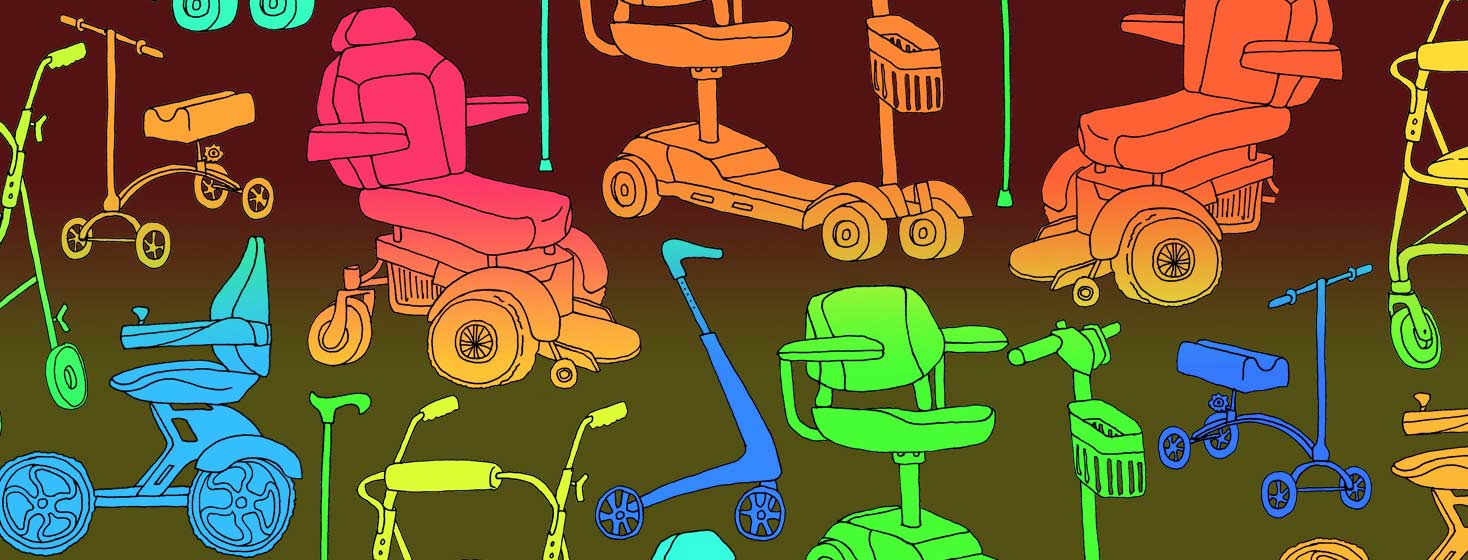When to Use Mobility Devices
When myasthenia gravis (MG) hit me, it smoldered along for the first year or so. I had some episodes of blurry vision, I was assured were migraines. The leg and hand weakness I attributed to needing to work out more and take more breaks from the computer.
Extreme muscle weakness
Then it changed tactics: My weakness became profound. I dragged my legs, shuffled my feet, had to rest against walls and on benches. In grocery stores, I leaned heavily on the cart and was exhausted after 15 minutes of shopping.
I’d get a few groceries, then go back to my car, haul my legs in with my hands because I couldn’t lift them, and rest for several minutes before I even tried to drive home.
I was so unsteady and weak that I started using a cane I had from a previous knee injury. By November, even with the cane, I couldn’t cross a street without asking a fellow pedestrian for help because there was a slight uphill.
I felt too young for a walker
I knew something drastic was going on. That’s when I first heard the words myasthenia gravis from a neurologist. The next week, at a different appointment for something unrelated, the doctor was so alarmed by my gait that he told me I had to start using a walker immediately.
I balked. I was not nearly old enough to be using a walker (or a cane, but I’d crossed that threshold already). The doctor was adamant, and I ended up with a walker that was difficult to maneuver in my house, and I was too prideful to use out of it.
In early December, my roommate and I decided to stop at Target for some holiday shopping. I didn’t have the walker or cane with me. “Use the motorized cart,” he said. I was aghast. I’d be that fat young guy using the cart without any obvious injury.
People would stare. People would think I was lazy. But R was persuasive. “Just try it. It can’t hurt.” I gave in.
It was a watershed.
Mobility aids are not shameful
We shopped for 2 hours and I wasn’t exhausted. We looked at all the things, bought a few gifts, and I still had energy to stop for dinner when we were done. That was when I decided I really didn’t care what anyone thought of me.
Using a mobility aid wasn’t a shameful sign of a character defect, it was just what it said in the name: An aid to mobility. Thanks to using the drivey cart, as we called it, I was able to go out and enjoy an evening of shopping and dinner with my best friend in a way I hadn’t in months.
After that, I saw an occupational therapist where I tried forearm crutches, and we agreed they were perfect for me. I bought a small mobility scooter second-hand, and then I could go to shopping malls and museums and conferences.
Using a power wheelchair
Now I have a power wheelchair and I love it. It means I can go places on my own and with friends. I have the freedom that I’d lost. I don’t have to use all my energy just getting from place to place.
People often ask me, “When is the right time to start using a mobility aid?” My answer is, “As soon as you think you might need it.” Try a rollator or a cane. Rent a wheelchair at the amusement park.
You may be surprised to see how much energy you can save for the things you really want to do.

Join the conversation